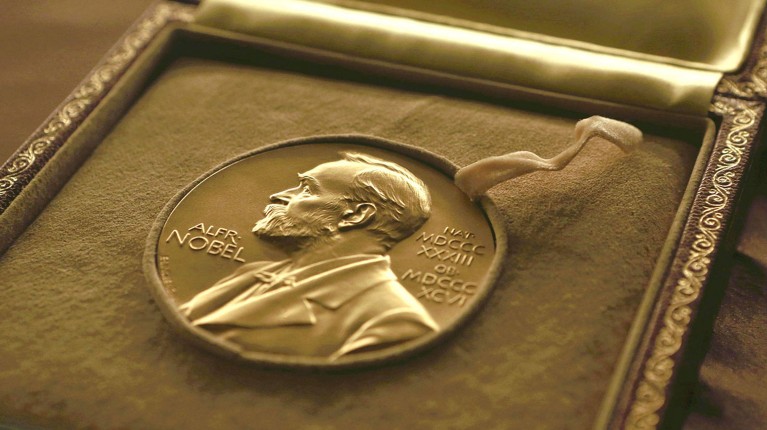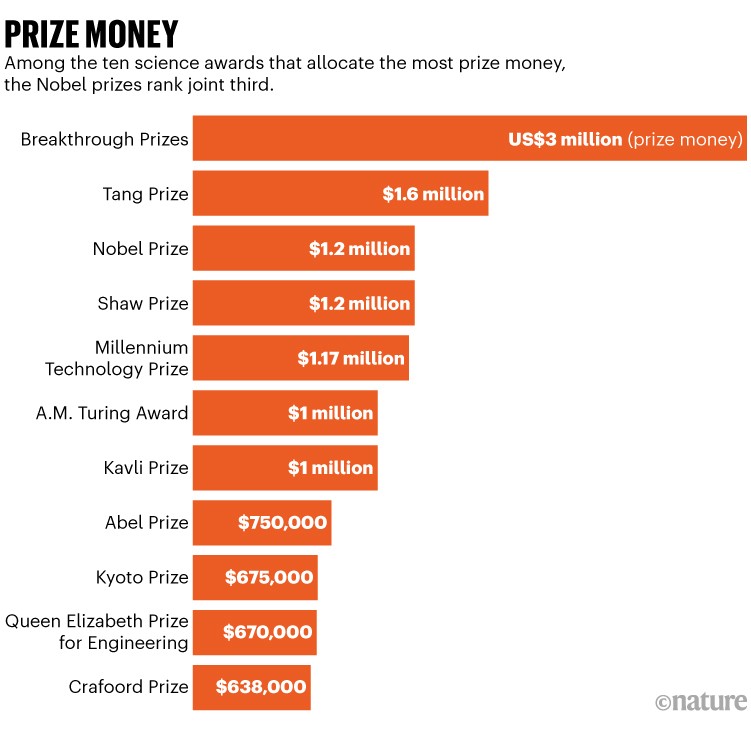
How do science prizes such as the Breakthrough Prize and the Turing Prize compare with the Nobel science prizes?Credit: Yomiuri Shimbun via AP/Alamy
The Nobel prizes are the most famous awards in science — and for many, the ultimate badge of research excellence and achievement. But in the past few years, a flurry of other prizes have popped up — in some cases to fill gaps in the subject areas covered by the Nobels, and in others, to offer a bigger financial reward. With the Nobel prizes set to be announced next week, how do these prizes compare with one another?
Although these newer awards (see ‘Prize money’) are becoming more significant, none match the Nobels, at least not yet, says biotechnologist Robert Langer at the Massachusetts Institute of Technology (MIT) in Cambridge, who has been awarded the Breakthrough Prize in Life Sciences, the Kyoto Prize and the Kavli Prize in Nanoscience. “In my opinion none are at that level,” he says.
Sara Seager, a planetary scientist at MIT and a winner of the 2024 Kavli Prize in Astrophysics, agrees. “The other awards want to catch up,” she says. “But for now, a Nobel prize is just so far ahead of the others. It was the first one and I just don’t think anything competes.”
It’s an opinion shared by many researchers, demonstrated in the way other awards borrow the Nobel moniker — the A.M. Turing Award, for example, is often referred to as the Nobel prize of computer science. Others, such as the Wolf Prize in Chemistry, are seen as good predictors for the Nobels.

Left out of the picture
Yet, the prizes leave many scientific fields out in the cold, such as mathematics, technology and climate science. “For many wonderful discoveries, there is no Nobel prize,” says Seager, giving the example of mathematician and meteorologist Edward Lorenz, whose work elucidated chaos theory, otherwise known as the butterfly effect. History also indicates that the scientists with the best chance of winning a Nobel prize are men from Europe or North America.
How to win a Nobel prize: what kind of scientist scoops medals?
Over the years, awards have been created to fill the gaps. Some also offer a lot more money than the Nobel prizes. The Breakthrough prizes, for example, founded in 2012, offer winners in mathematics, fundamental physics and life sciences the largest award of US$3 million, although not without accusations of borrowing the prestige of the Nobels. The million-dollar threshold is also met by the Tang, Shaw, Turing, Kavli and Millenium prizes.
But no prize is faultless. Researchers tend to work in teams, and yet most prizes, not just the Nobels, single out individuals for plaudits.
“Only a small fraction of the excellence happening in academia is acknowledged with these prizes,” says environmental scientist Zahra Kalantari at the KTH Royal Institute of Technology in Stockholm, who is a winner of the Frontiers Planet Prize.
Lack of women
Source link



